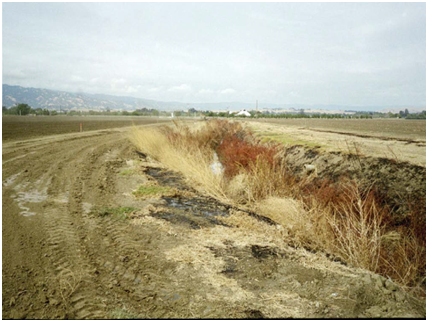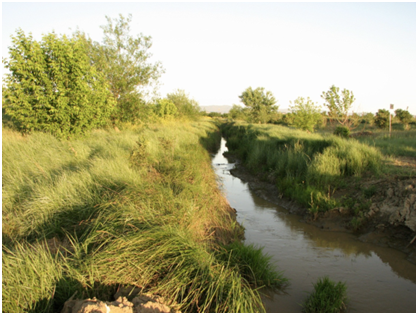It’s tree planting time. The rains have come, and our habitat team is in high gear: augering holes, sowing native grass seed, and getting young plants in the ground. We at Audubon California plants trees and shrubs to support the birds that need them for food, cover, and nest sites. Valley oak, coyote brush, redbud, coffeeberry, wild rose, toyon. When there is sufficient room next to a waterways , these plantings mimic the riverside forests that used to run ribbons across the Valley, providing one of the richest habitats for wildlife in North America.
Audubon is always looking for more farmers who want to join us in our Working Waterways initiative. Working Waterways are the circulatory system of your farm: the canals, sloughs and ditches that make farming possible. And when planted with native vegetation, their banks can provide many benefits to the farmer: improved water quality, less need for herbicide, habitat for beneficial insects. Thanks to the cooperation of two Yolo County landowners, and funding from NRCS , the US Fish and Wildlife Services’ Partners for Wildlife Program, and the Yocha Dehe Community Fund, our staff is planting over 500 trees, along with thousands of flowering plants, sedges and rushes, along the banks of Willow Slough and Union School Slough. We designed these plantings with the farmers to ensure that they would have access to the waterways for maintenance purposes, and for ease of mowing for weed control until the young plants are established and can effectively outcompete the weeds.
Why do farmers work with us on these projects? The reasons are as diverse as the people we work with. Some want to see more birds, provide food and cover for the quail they used to see. Others are interested in preventing erosion, improving water quality, or encouraging more native pollinators to visit their crops. Once established, these plantings often become a favorite spot on the farm, a place to eat lunch, listen to birds, and enjoy some shade.
No two plantings are the same: some are restricted to low-growing native grasses, others include mature oaks interspersed with cottonwoods and willows. Some incorporate flowering and fruiting trees and shrubs, and others include all these elements. Each planting is as unique as the site and the farmer.
If you have a waterway you’d like to consider planting, please contact vcalegari@audubon.org
Below is a Yolo County waterway in 2005, just before being planted with natives, and again in 2010.






So glad to see the implication of greens, grasses, shrubs, and other necessities used in such an impactful and important way! This is exactly what I want and need to do along my property’s canal, not only for the positive impact, health of soil, structure of the banks, and stopping my property from falling away every year, but also for the chance to show the difference in how well this can help, not just me, but the land and all its residences. I see a picture of a canal in Yolo County, and wondering what all is used there, that’s exactly what im working with in Sutter County. Is it legal for me to do the same, or need to arrange anything with anybody?